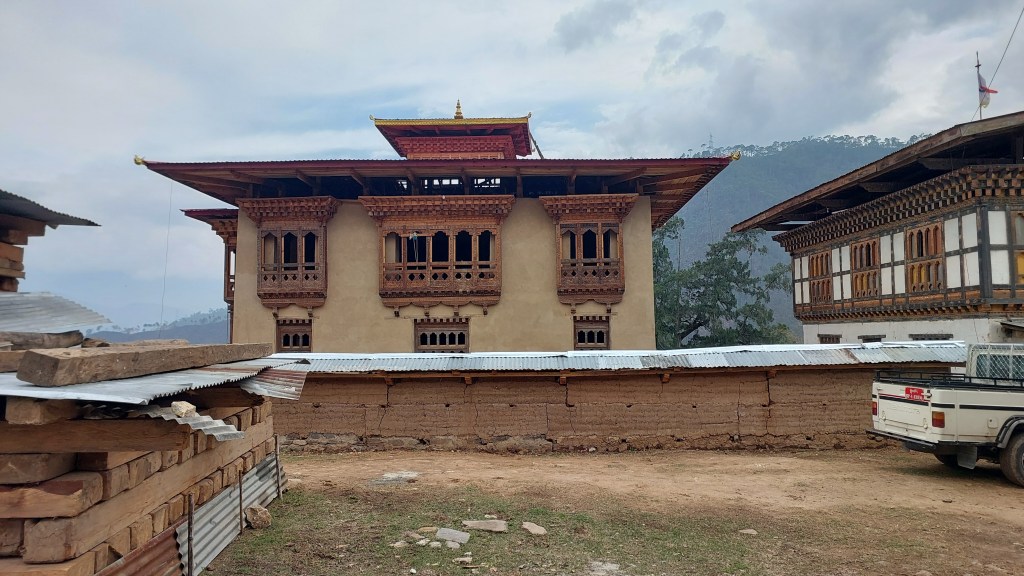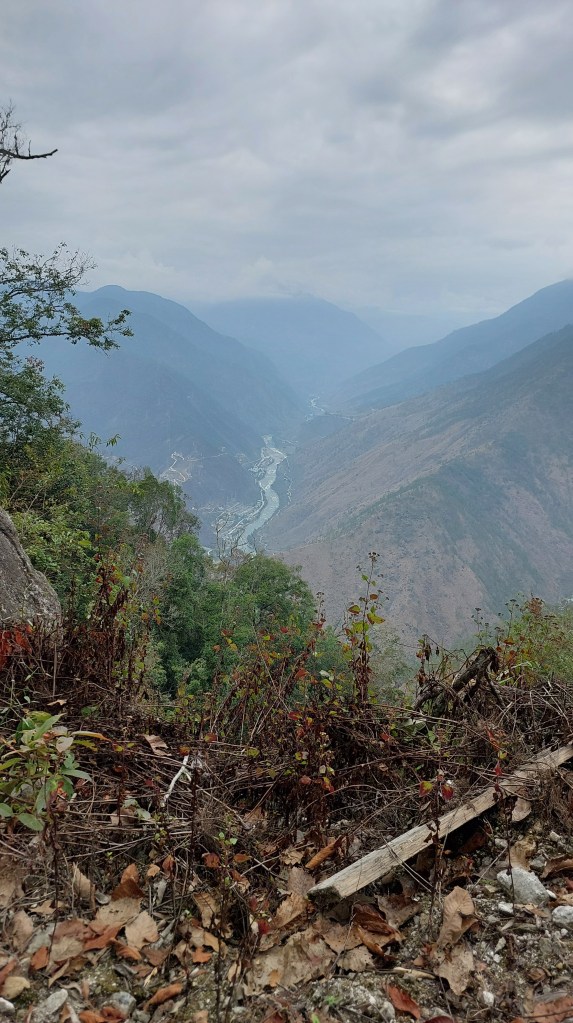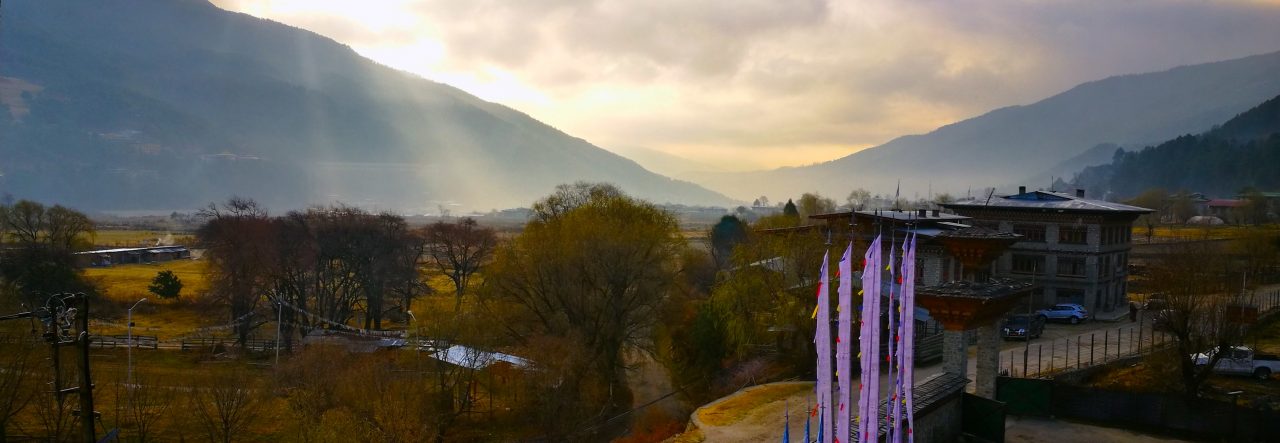Jarogang Temple is located in the village by the same name. It is in Athang gewog – and one can see it perched on the hill across the river, when driving along Wangdue-Tsirang highway and when you reach around Kamichu.
Jarogang takes its name from Legon Jarog Dongchen – one of the three supreme protectors of Bhutan. This deity together with Yeshey Gonpo (Mahakala) and Palden Lhamo (Sridevi) make up the trinity of protector deities for Bhutan as established by Zhabdrung Ngawang Namgyel (1594-1651).
During the Second Tibetan invasion in 1934, Semtokha Dzong was captured and occupied. Zhabdrung Ngawang Namgyel felt that his presence in the country was causing too many troubles for his hosts and may lead to more deaths in his name. So he decided to leave for India – enroute to Ladakh where the King there, Senge Namgyel, had invited him. Like many of his predecessors Zhabdrung Ngawang Namgyel intended to go on a lifelong retreat to Mt. Kailash, which was then part of the Ladakhi Kingdom.
However, when he reached a stream after descending from Jarogang village, the deity Jarog Dongchen appeared to him and requested him to stay. The deity assured him that he would take care of the invaders. Zhabdrung, then, is believed to have returned to Jarogang and stayed in the house of Zomlha Chugmo (literally meaning Wealthy Lady of Zomlha). Few days later Zhabdrung again felt he was not only freeloading on the local people but also causing too much burden. He again set off only to be met with the deity at the same spot, who then informed the Zhabdrung that Semtokha Dzong has been razed down by a fire and all invaders have been killed. Zhabdrung named the small stream where he heard the news as Deychu – to indicate the stream where he received the good news. Zhabdrung returned to Jarogang and informed his hostess that he had decided to return to Chari.
The “kutsab” and the sacred relics of Zhabdrung
On the day of his departure, the hostess begged him to stay there and offered him the large house from where Zhabdrung could base his dharma activities. It is believed that Zhabdrung made two statues which resembled himself out of the rice dough and presented them to the hostess as his kutshab (representative). The statue, he promised, would carry the same sacredness of blessing as receiving it in person from him.
While one of the statues is still there today, the other is believed to have flown away and landed somewhere in Tsirang. No one knows about it. However, the people of lower Wangdue and Tsirangtoe believe that the area would have good harvest and all nine grains because somewhere there is this second statue “stuck on a tree”, according to the legend.
The other amazing relic (for me) is his phurpa (ritual dagger), which seems to be very powerful. There is also a conch, a bell and a cymbal, which were all gifted to the Zomlha Chugmo. There is also a small metal statue called kharsapani, which is also believed to be self-arisen (rangjung). Some sources say that there were more relics and belongings of Zhabdrung but were apparently taken to Lama Lhakhang in Wangdue Phodrang Dzong – and brought here when the new dzong was built to be used as nangten. Nevertheless, in my view, Jarogang Lhakhang still has the biggest collection of relics associated with Zhabdrung – making it a recommended pilgrimage destination for every Bhutanese – irrespective of the faith, sect, or religious affiliations. In fact Zhabdrung was the founding Father of Bhutan – besides being the emanation of Avalokiteshvara and Guru Rimpoche.
The trees of Jarogang
The visit to Jarogang is incomplete without visiting the jackfruit tree, which is believed to have grown out o a seed planted by Zhabdrung Ngawang Namgyel. Even today the lama and the monks of Jarogang make the offering of the first harvest to the Machen Lhakhang – where the mummified remains of Zhabdrung is preserved today (he was never cremated). This tradition has been continuing for over three hundred years now.
There is also a tall cypress tree below the temple, which is believed to have grown out of the Zhabdrung’s walking stick. Legend has it that with numerous wars and invasions, he doubted if his mission to establish a Drukpa state would be successful. Thus, he planted the walking stick and is supposed to have made a moelam (aspirational prayer) that if he were to succeed a tree would grow out of the stick.
(Triviality: The exteriors of Jarogang temple retains the mud color without getting the white lime wash. The folk theory is that the local deity of Uma demanded that Jarogang temple should not get a whitewash. In retaliation the deity of Jarogang demanded that Uma Gonpa won’t get a sertog (the rooftop pinnacle). So even today Jarogang temple is not whitewashed, and Uma Gonpa has no sertog)
Getting there
Along the Wangdue-Tsirang highway, before you reach Kamichu there is a cantilever bridge and on the other side of the bridge is marked as the headquarters of Jaypee construction company. Cross the bridge and drive for some two kilometers till you reach a diversion – marked with two signboards. To the left is to Jarogang, and to the right is Athang gewog office.





